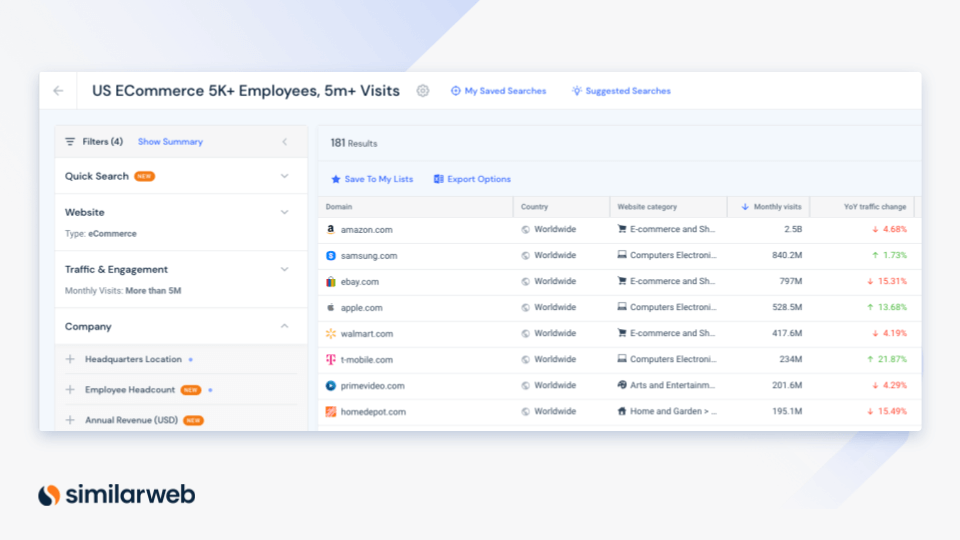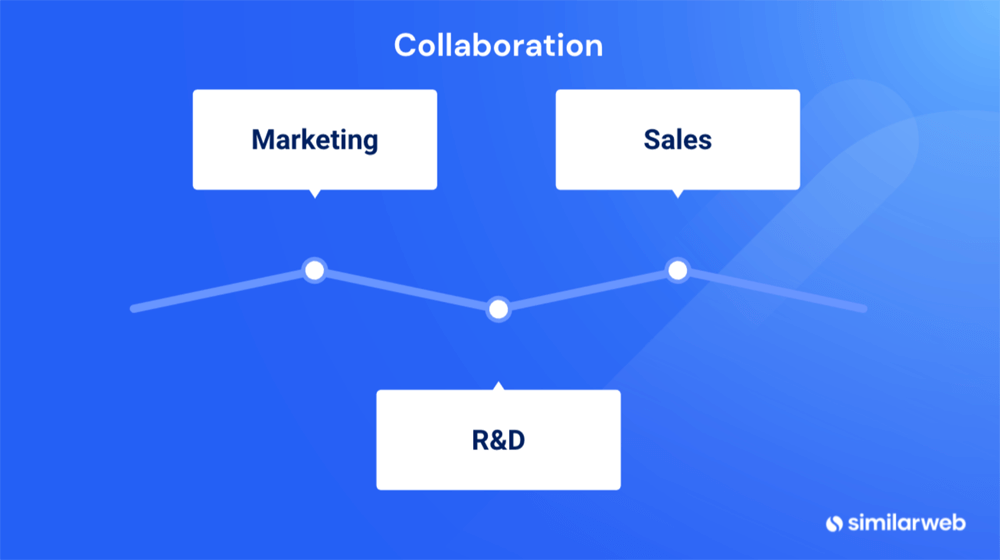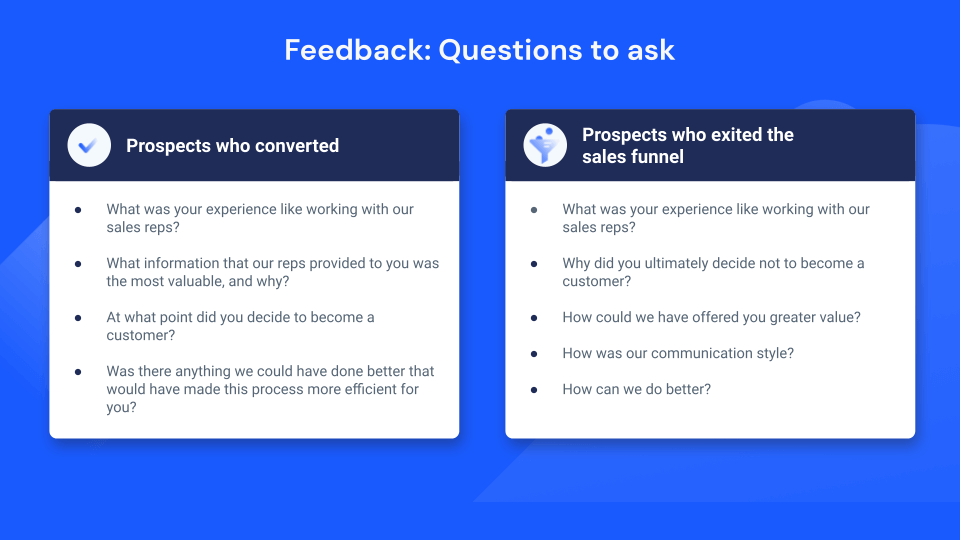10 Sales Tactics to Boost Revenue and Drive Growth

The world of B2B sales has changed, which means your sales tactics must too.
There are two main reasons why:
- Prospects have higher expectations and less patience than ever. The key is communicating the value you offer immediately. No drawn-out sales pitches. No old-school techniques.
- New technology has created time-saving opportunities. Prospecting and lead qualification must be efficient. And cold calling isn’t as “cold” as it once was.
Creating connections with prospects and earning their trust today requires the right data, tools, and strategy.
The most successful sales organizations are those that constantly look for new ways to resonate with their prospects and refresh their techniques across the whole sales process.
In this article, we’ll cover 10 of the best sales tactics you can start using today to find better prospects, form more meaningful connections, and crush your quota.
10 of the most powerful sales tactics examples
Embracing the most effective sales approach helps you close more deals and build lasting relationships with clients.
Some sales tactics are timeless, while others have emerged thanks to new technological developments and business/consumer trends.
Let’s dive in:
1. Listen actively, and focus on solving problems
If you dive into your pitch as soon as you get a prospect on the phone, you’ll have a hard time making a connection, or convincing them to speak with you again.
People don’t want another sales call. They want a solution to their problems.
Need proof? Check out this statistic from Salesforce:
The best way to engage a prospect and begin building a rapport is the same way as you nurture any relationship – simply listen.
After introducing yourself in your discovery call, start by asking them a few simple questions. But remember, this is a conversation, not an interrogation.
Some questions to consider:
- What is one of the biggest challenges your company is facing now?
- What do you need in order to make your job easier?
- What are some of your top business goals?
- Do you have everything you need to achieve them?
- How does your company stack up against the competition?
- What do you need in order to gain an edge?
Imagine your company sells project management software to enterprise organizations.
Starting your call by asking questions and listening to the answers, you’ll understand exactly how to position your project management software as the best possible solution for them.
Not only will it be clear which features and capabilities to highlight, but you’ll also know how to frame conversations about competitors.
If the prospect explains that she wants her team to start adhering to the scrum methodology, you can point out that your software has an entire suite of scrum tools – while XYZ competitors don’t.
There are many ways to listen
Of course, demonstrating that you’re listening to prospects during your phone calls and meetings with them is crucial to being able to communicate the value you can offer them.
But this isn’t the only way to gain a deeper understanding of what keeps your prospects up at night.
Here are two more techniques that you, or salespeople on your team, can use to learn about your prospects’ needs (and ultimately close deals):
- Run a survey for your inbound leads or prospects that fit your ideal customer profile (ICP). After analyzing the answers, incorporate key findings into your sales scripts, demos, and decks to narrow in on the challenges companies are facing, as well as how your product or service stands as the best solution.
- Create a focus group. Gather a group of people who fit your ICP (whether they’re customers or prospects) and facilitate a conversation about their main challenges. Often, people open up more when they’re speaking to others who feel the same pain points.
2. Stay true to your word
Nothing spoils a great connection with a prospect like poor follow-through, but it happens all the time.
Well-meaning reps often forget to follow through on a request from a prospect – like finding out the answer to a question they were posed during a call – simply because they’re busy or didn’t write it down.
Or reps make promises they can’t keep because they think it’s okay to say whatever it takes to close the deal.
Whatever the reason, poor follow-through eats away at your credibility and can be disappointing, making it more difficult to convert that person down the line.
Staying true to your word is one of the most effective sales tactics that you should apply to every interaction with prospects.
It could be as small as sending them an email with a link to an interesting podcast you mentioned on your last call, and promised you’d share. Or really asking your R&D team if that special request your prospect asked for is possible.
These gestures go a long way in building trust – an essential factor in showing a prospect that your product or service is right for their company.
3. Data is your friend. Opinions aren’t.
Relying on data over opinions is one of the most important selling tactics examples to know.
Making decisions based on data not only helps you and your fellow sales reps avoid a whole lot of unnecessary debate, it also helps you make more accurate decisions and work more efficiently.
According to Gartner:
A data-driven approach is a powerful efficiency driver in two crucial stages of the sales funnel: prospecting and engaging leads.
Sales prospecting with the right data
When you rely on data to identify all of the prospects who fit your ICP, you can easily build a list of relevant prospects who have the highest chances of becoming long-term paying customers.
Relying on your intuition or instincts with sales prospecting will result in a lot of wasted time and energy.
Similarweb Sales Intelligence allows you to identify hyper-relevant prospects based on an array of specific criteria. It tracks over 30 million eCommerce sites, 40 million advertisers, and 50 million publishers, offering full visibility into your potential customers’ strategies and performance.
For example, in addition to data like type of industry, company size, and region of operation, you may also want to focus on prospects that:
- Are getting increasingly more – or less – traffic from certain channels (like paid search or social media)
- Reached a specific volume of website traffic last month
- Already work with competing, or complementary vendors
In the image below you can see Sales Intelligence’s Lead Generator in action, narrowing down companies to find the perfect prospects for your business.
Another strategic way to use data is during your communication with leads. In this situation, data will help inform your outreach and position you to provide real value.
Imagine you’ve just identified a new eCommerce prospect for your shipping and logistics company. In your email, you could provide a few statistics to pique their interest and immediately set the tone that you are there to provide value.
For example, you could point out that three of the prospect’s main competitors ship to a region that the prospect doesn’t service, which – perhaps without them realizing – is making it harder for them to stay competitive.
Then, you could mention that by expanding shipping to other service areas, they can become more competitive and increase their overall revenue by 19%. These are some great data-informed reasons for them to sign you on as one of their shipping partners.
4. Don’t trash-talk
One of the selling tactics that’s really changed over the years is how to talk about your competitors.
Ambitious salespeople who are highly motivated to sell are often not afraid to be blunt about their competitors’ shortcomings. In the past, this was a common technique. Reps thought it helped them appear assertive and confident. Today, this approach is not recommended.
While proving why your company’s product or service is better than your competitors’ is important, tact is critical as a part of sales discussions.
You risk looking like you only care about closing the deal, rather than connecting the prospect with the solution that will benefit them most.
In other words, if you really want to deliver value and advice to potential buyers, you’ll be honest about how you and your competitors compare.
When you’re straightforward about what you can and can’t do, you’ll prove that you’re trustworthy and reliable.
5. Review your conversations with prospects
One of the best ways to improve your B2B sales techniques, pitching, and processes is by reviewing your conversations with prospects afterward.
There are plenty of solutions that allow you to record your meetings, such as Gong and Fireflies.
This type of software automatically records and transcribes your sales calls, making it easy to go back and analyze your conversations with prospects so you can understand what was successful and what wasn’t.
Reviewing your sales calls also helps you prepare for follow-up conversations to boost your chances of conversion.
Sales leaders can benefit from reviewing their reps’ calls, too. Doing so helps them evaluate reps’ performance and provide more targeted coaching. Perhaps, after listening back to reps’ sales calls, they’ll have suggestions for improving the script. Or they can provide tips for answering difficult questions.
Finally, the recordings also serve as great onboarding materials. When training new salespeople, you can provide examples of successful sales calls with prospects, as well as examples of calls that didn’t go well. Offering real-world examples is always more impactful than providing abstract advice.
6. Keep learning
Another of the best tactics is staying informed on industry trends, technological developments, regulatory changes, and anything else that could impact your prospects’ business.
By keeping a pulse on the factors that influence your prospects’ business needs, you’ll always be prepared to pivot your offering and find new ways to offer value. If you don’t, it won’t be long before your key talking points become obsolete.
For example, when the EU passed the extensive collection of data privacy and security laws known as GDPR, most marketing departments were initially unsure of what to do. For the first time, there would be extremely strict regulation of how marketers use consumer data, and many feared the advertising techniques they’d been relying on for years would no longer be allowed.
Companies that provide marketing tools and services had to quickly pivot in order to meet their customers’ rapidly evolving business needs and concerns. By becoming well-versed in GDPR themselves and understanding how to guide their customers through this transition, sales professionals were able to become known as even greater sources of support and value.
7. Collaborate with other departments
This is an often-overlooked sales technique. However, collaborating with departments like marketing and R&D is a great way to improve sales success.
Join forces with marketing
By working closely with your marketing team, you can help ensure your company’s inbound marketing strategy and execution will bring in the best possible leads.
Inbound marketing is the process of targeting and educating potential customers on your company’s products and services in a way that clarifies how you could offer them value.
The goal is to create brand awareness, attract relevant leads, and spark engagement so you can add prospects to the sales funnel and eventually convert them.
If your department works together with marketing, the outcomes of these efforts will be far more effective than if marketing simply brings in leads and hands them over to your SDRs. All inbound marketing activities – such as email marketing, organic social media, LinkedIn campaigns, thought leadership, blogs, ebooks, webinars, paid ads, and retargeting campaigns – will be consistent and aligned with your sales strategy and sales process.
By coordinating your efforts, you’ll ensure marketing is gathering the right leads, and that they understand your relevance and value proposition.
Team up with R&D
Another great selling tactic is building relationships with the folks who actually build the product or service you are selling.
By forming close ties with your R&D department, you’ll gain a better understanding of your offering’s capabilities – and in return, its value.
The collaboration should go both ways. In addition to learning more ways your product or solution offers value, you can use the insights you’ve gleaned from talking to prospects to provide new ideas to R&D.
For example, if a dozen prospects over the last two months have expressed a need for a specific feature, you can let R&D know this is something prospects want. Working together allows you to more quickly and effectively address prospects’ needs.
8. Follow up with your prospects
Even after a positive initial call, it can be hard to get in touch with prospects and keep them actively engaged. That’s why following up is an essential sales tactic to practice.
Sometimes prospects don’t get back to you because you simply caught them at a bad time. Or, your email got buried in their overflowing inbox.
Whatever the reason, establishing an ongoing dialogue requires persistence.
Email is a great way to follow up, but remember that timing (and quantity) is everything. You don’t want to bombard your prospect with too many emails – you’ll risk coming off as annoying or spammy. Space out your follow-up emails by a couple of days so you don’t end up getting blocked or ignored.
You can make your follow-up messages more effective by offering information and value in each one. Instead of just asking to set up another call, offer actionable information they can apply to their work today.
Here are five more tips for writing a follow-up that stands out.
- Ask how business is going. Lead the prospect to share what challenges they’re facing today.
- Mention personal details from your previous conversations. This is a great way to engage people and form connections that ultimately drive sales.
- Address their pain points. Mention the specific pain points they’re facing in combination with how your product or service can provide value. By reminding them of the pain – and the solution – they’ll be more inclined to continue the conversation.
- Share high-value content. Another great follow-up tactic is to share a link to an article, blog post, podcast, video, or another form of content that’s relevant to a prospect’s needs. This is an easy way to offer value and strengthen your connection.
- Update them on discounts. If your company is offering a limited-time discount, you can use this as an excuse to reach out and add a bit of urgency to your proposition.
9. Ask for referrals
Asking your current customers or prospects for referrals can give you some of the best leads. Today, when all of us are inundated with ads, word-of-mouth recommendations carry more clout than ever.
If you can get some of your current customers or prospects to vouch for you, the payoff could be huge.
Often, when someone gives a referral, they do much of the preliminary education for you.
For example, if a customer of your project management software recommends your platform to their friend who works at another enterprise company, they’ll probably explain how your tool works and why they love it. Your customer may even answer some of their friend’s questions, so by the time you speak to them, they already understand how you can bring them value. Plus, you automatically seem more credible, since they’ll assume their friend did their due diligence before converting.
10. Ask for feedback
When it comes to your selling techniques, there’s no one better to solicit feedback from than your prospects themselves.
Prospects who converted to customers, and those who exited the sales funnel, can both offer great feedback.
Here are some guiding questions to ask prospects in each group.
By asking for completely honest and straightforward feedback, you can identify how to improve your selling techniques, make your communication more effective, and prevent past mishaps from happening again.
Get the best results
Whether you’re an SDR, an AE, a Sales Manager, or any other sales professional, you can leverage the true potential with the right sales tactics and data to rely on.
At every stage in the sales process, Similarweb Sales Intelligence allows you to sell smarter and crush your quota – helping you to find the best prospects to target, and craft pitches that win.
Why not let us show you what our insights could do for you?
Further reading
Check out some of our other blogs on increasing B2B sales and Generating B2B leads to learn more:
How to Increase B2B Sales: Your 8-Step Playbook
How to Generate B2B Leads: 11 Tactics That Get Results
FAQ
What are 4 general ways to increase sales?
Getting more clients, increasing the average transaction size, encouraging more transactions, and reviewing prices.
What causes revenue to increase?
Steady, consistent branding and consistent pricing help you get maximum revenue on the sale of each good or service.
Boost your consultative selling impact
Try Similarweb Sales Intelligence today — free of charge
















